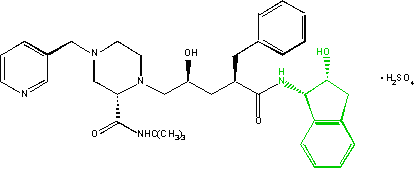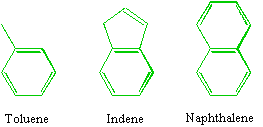

Rhodococci are Gram-positive bacteria closely related to such medically significant genera as Nocardia, Mycobacterium and Corynebacterium. Although there are a few species of Rhodococcus that are pathogenic, the majority appears to be benign soil inhabitants. Rhodococci have useful properties, not the least of which is that many different isolates have been identified that can metabolize harmful environmental pollutants such as toluene, naphthalene, herbicides, PCBs and the like.
Typically, rhodococci metabolize aromatic substrates, such as toluene or naphthalene, by first oxygenating the aromatic ring to form a diol (two alcohol groups). Subsequently, they will cleave the ring via either an intradiol or extradiol mechanism, opening the ring and making the substrate available for further metabolism. The biochemistry involved in these reactions is very stereospecific. That is, the individual enzymes that incorporate the oxygen atoms into the ring typically create diols with predictable chirality. Downstream enzymes responsible for dehydrogenation of the diols or ring cleavage may also be very stereoselective, only acting upon, for example, a cis-(1R,2S)-diol while not recognizing a cis-(1S,2R)-diol.
Although controlling the chirality of chemical reactions may pose a challenge for a synthetic chemist, many biological systems have evolved very exquisite controls for stereochemistry. This observation raises the possibility that biological systems might be employed in the production of chiral molecules in cases where direct chemical synthesis is infeasible or inefficient. This prospect of using biological systems to convert cheap starting materials into more valuable compounds is known as "bioconversion."
Bacteria have been used in bioconversion processes for decades, and Rhodococcus in particular has found use in commercial settings, for example, in the production of acrylic acid. In recent years, an encouraging new line of research on Rhodococcus has focused on using these bacteria to synthesize chiral precursors to pharmaceuticals such as the AIDS drug Crixivan™.
HIV and AIDS Therapies
HIV is the causative agent of AIDS. Before the introduction of HIV protease inhibitors, people infected with HIV had few therapeutic options. The first generation of anti-HIV drugs was the nucleoside analogs (AZT, ddI, etc.). These compounds hamper the replication cycle of HIV by interfering with reverse transcription - the process by which the RNA genome of the virus is copied into the DNA form to be integrated into the chromosomes of the host cell. While nucleoside analogs offer some benefit to AIDS sufferers, the drugs themselves become less valuable when viral resistance arises. As a result, nucleoside analogs alone do little to improve the long-term prognosis for AIDS patients.
In late 1995 and early 1996, the U.S. Food and Drug Administration approved for use three new drugs for combating HIV. These drugs were the first examples of HIV protease inhibitors. Protease inhibitors act upon the virus in a manner distinct from the nucleoside analogs. Protease inhibitors inhibit an earlier step in the infection, in which a virus-encoded protease cleaves a large polyprotein to release active viral proteins. When used in combination with nucleoside analogs, protease inhibitors dramatically reduced viral loads in patients' blood, and many patients experienced strong reversals in AIDS symptoms. Equally encouraging is the observation that patients taking a cocktail of nucleoside analogs and protease inhibitors experience much lower incidence of virus resistance to the therapy. Of the protease inhibitors now in general use for AIDS therapy, one of the most effective is Crixivan™, manufactured by Merck Pharmaceuticals.

Crixivan™ (also known as indinavir sulfate) is a potent protease inhibitor produced by Merck that is used to combat HIV.
Unfortunately, with its five chiral centers, the synthesis of Crixivan™ is very difficult and inefficient. It involves 15 different steps and much of the product is lost at many of these steps due to racemization. This inefficiency creates the risk that the supply of Crixivan™ will not be able to keep up with patient demand in the next few years.
In 1996, scientists from Merck approached M.I.T. to determine whether alternative strategies could be developed for producing Crixivan™. Specifically, these researchers sought to eliminate several of the steps involved in chemical synthesis of the drug by developing bacterial strains that could produce key precursors for Crixivan™. One of these precursors is amino indanol. By itself, amino indanol accounts for two of Crixivan's five chiral centers, making it a primary target for improving synthesis.

cis-Amino-indanol is one of the intermediates that is used to assemble Crixivan™.
Bioconversion and Rhodococcus
Conceivably, bioconversion could be used to produce amino indanol from starting
materials such as indene. For example, oxygenation of indene would produce indandiol,
which could then be used to make amino indanol. A reasonable strategy for identifying
an organism that could oxygenate indene might be to isolate bacteria that can
consume indene as a sole carbon source. However, scientists at Merck Research
Laboratories were never able to recover bacteria that could grow on indene -
a serious obstacle to their research aspirations. Not to be dissuaded, these
scientists reasoned that since indene is structurally similar to naphthalene
and toluene, enzymes that oxygenate these substrates might also be able to act
on indene.

Chemical structures of toluene, indene and naphthalene
Thus, Merck scientists screened a series of naturally-occurring, toluene- or naphthalene-degrading bacteria. From this screen, they recovered several different species, the most promising of which were a series of isolates from the genus Rhodococcus. When these same bacteria were challenged with indene, they found that some of the isolates could, in fact, oxygenate the indene to indandiols although none were able consume the indene as a sole carbon source.
One of the most promising Rhodococcus isolates discovered in this way is the I24 strain. Subsequent analysis of Rhodococcus sp. I24 revealed that this bacterium possesses at least three different oxygenase systems that act upon indene. The first of these is a toluene-inducible dioxygenase. The second is a naphthalene-inducible dioxygenase, and the third is a naphthalene-inducible monooxygenase. Each of these enzyme systems is responsible for the production of an indandiol with a unique stereochemistry. The level and balance of activities for each of these enzyme systems affect the efficiency of indene bioconversion in Rhodococcus.
Identifying a Rhodococcus isolate that can oxygenate indene and having
a viable indene bioconversion system are two different matters. Being able to
use Rhodococcus in any meaningful bioconversion strategy will depend
heavily upon understanding the conversion process in vivo. Thus, in addition
to discovering the genes involved in indene bioconversion, we are also studying
how the indene oxygenation pathways are controlled. To improve methods for transforming
and modifying Rhodococcus, we have been developing better methods for
manipulating Rhodococcus at the genetic level via transformation, conjugal
transfer, and gene knock-outs.